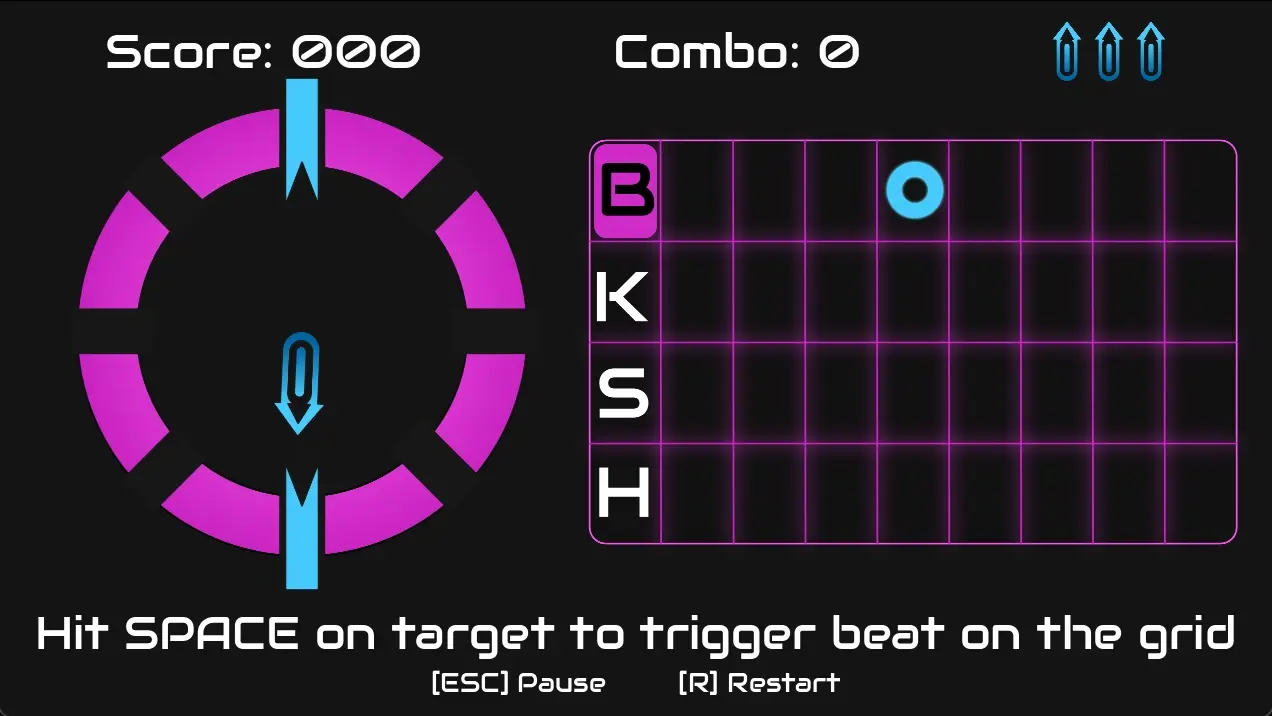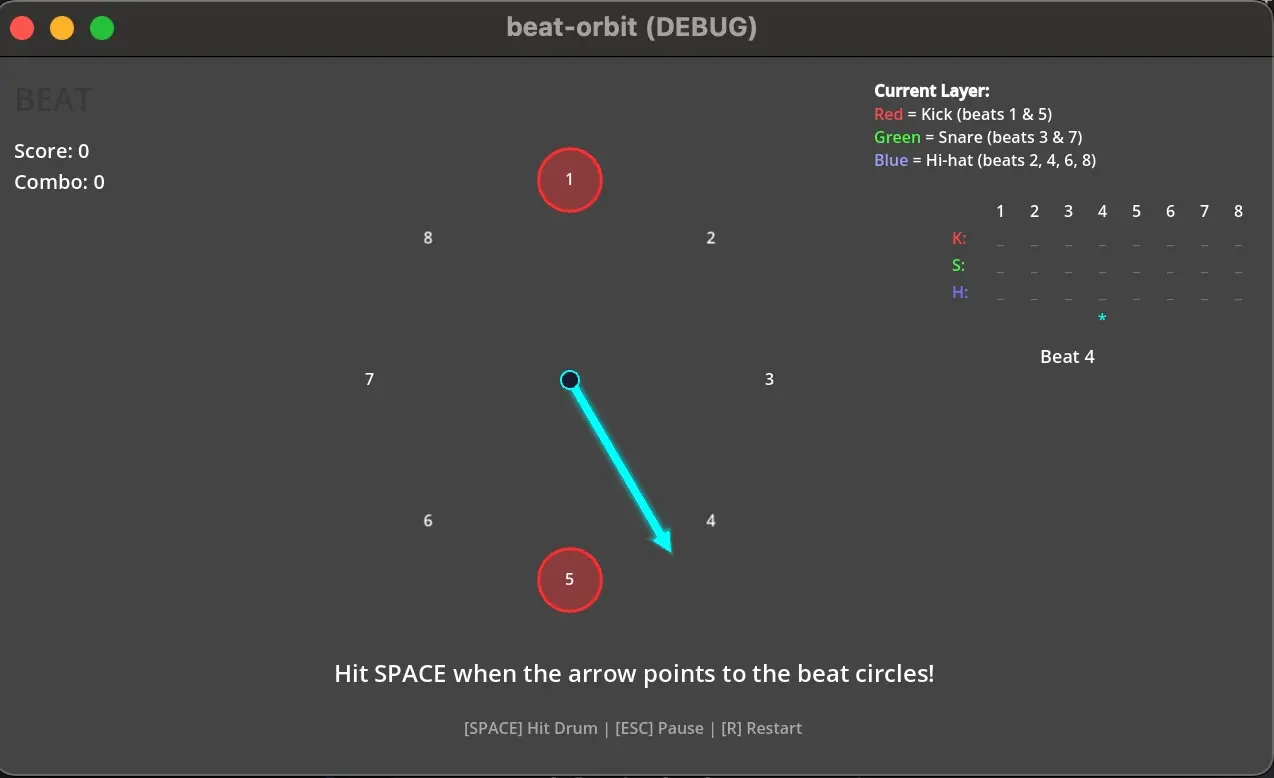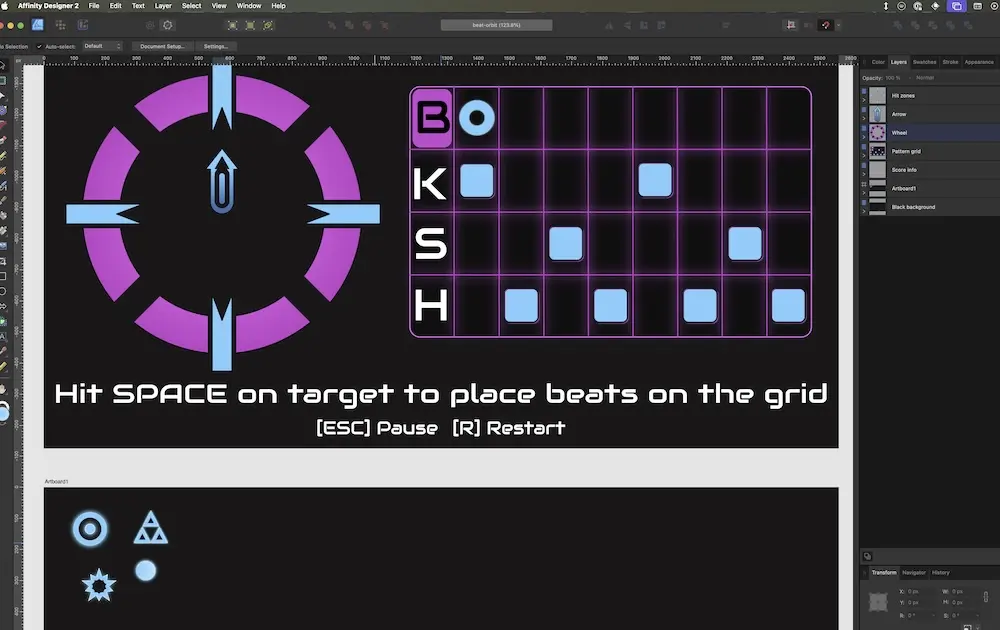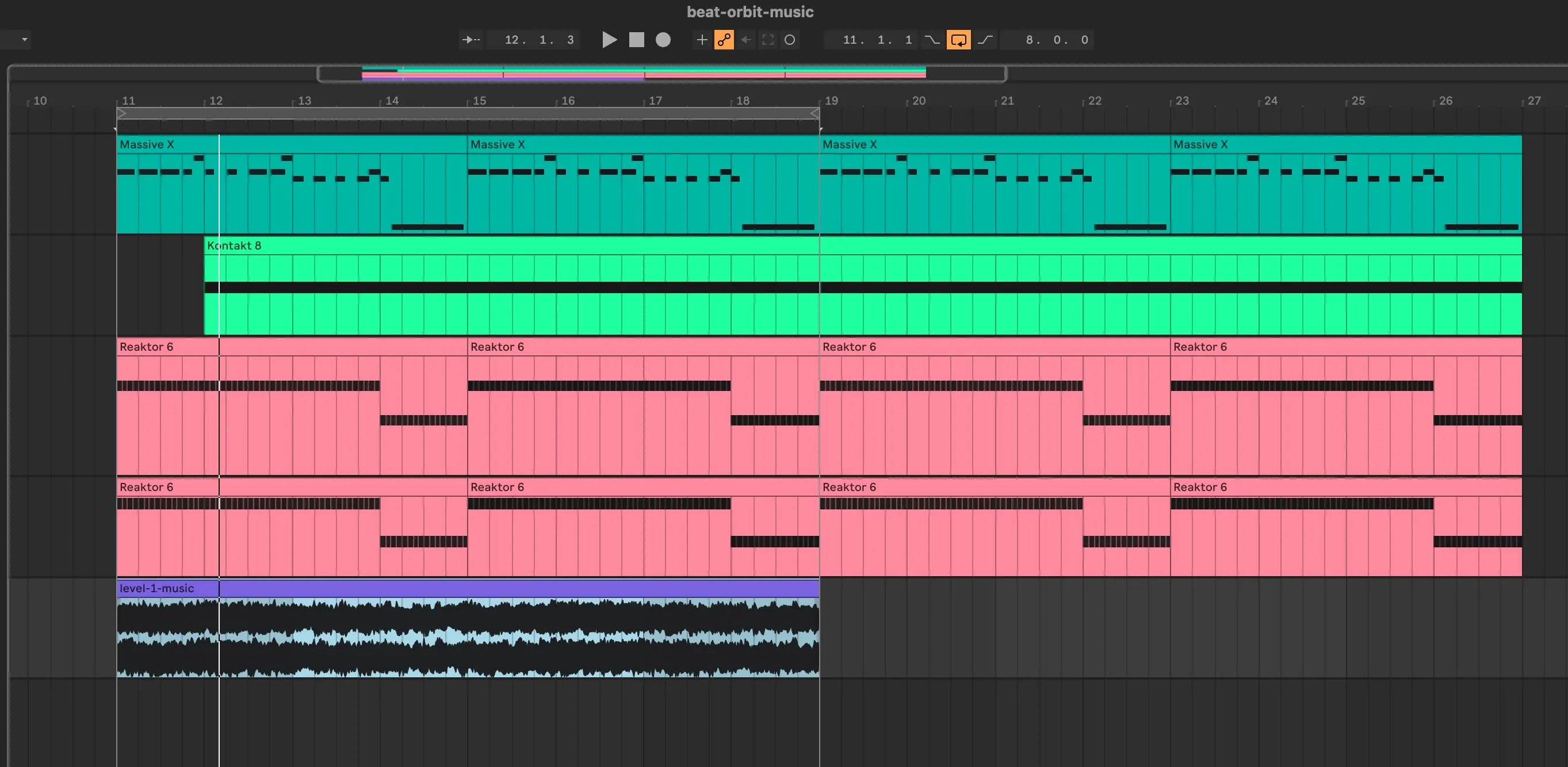
Building Beat Orbit
When a friend on Discord gave us the heads up about the GMTK Game Jam 2025 I wasn’t sure if I had the time and energy to particpate. The theme ended up being the word “Loop” which was awesome because I used to be heavily into musical looping performance! I was excited for the theme, but that didn’t change the fact my day job has been pretty stressful, I have a 7 year old, and a 3 month old puppy! What really pushed me over the edge was my buddy John handed me a great idea on a silver platter and told me to use it!

At this point, I felt like I had no excuse. What emerged was Beat Orbit – a synthwave-styled rhythm game where players build drum loops by timing button presses as an arrow rotates around a neon wheel. This is the story of how it came together in a few days, with some help from AI.
The Concept: Drums in the Round
The core idea changed through a few iterations. During the initial prototyping phase I experimented with a clock hand spinning, as well as a wheel with values spinning with a hit zone.


I ended up choosing the spinning arrow mechanic with a synthwave aesthetic for some simple vector art. I’m still learning the ins and outs of Affinity Designer 2 and it’s really growing on me.

Setting Up the AI Collaboration
This jam marked my first time using Claude Code with the Godot MCP (Model Context Protocol) server, and it transformed my development workflow. Game development is my creative outlet so I enjoy that Claude allowed me to free up more time to create music, sound effects, and art from scratch as a solo participant. I set up Godot to use VS Code as my GDScript editor, with both the godot-tools, and GDScript Formatter & Linter extensions. I added my own .gdlintrc file to maintain a strict static analysis of the codebase. I also included a requirements.md file to have small bite sized tasks the Claude code could help with along the way. Although before I got started with Claude code (with /init) I set up all my project settings, as well as scene and node structions within the Godot editor, first to establish a good foundation to build upon. Intellisense + linting + format on save + Claude code = one happy Dad!
Wild Animations: Finding the Personality
While implementing hit feedback, I accidentally created what became Beat Orbit’s signature feature. I was testing rotation animations and set the values way too high – the drum wheel went absolutely wild, spinning multiple times with random direction changes. Instead of fixing it, I realized this could be the game’s personality.
Each drum type got its own “wild animation” style:
- Kick: 1-2 fast full rotations, like the wheel got punched
- Snare: Multiple chaotic half-turns, creating a frantic energy
- Hi-Hat: Simple direction reversal, keeping the beat tight
These animations gave each drum hit a distinct visual personality that matched their sonic character.
Audio
I had a blast creating and mixing the background music! The danger here is that I lose track of time and space when working on music. I could easily spend the whole game jam making music so it definetly helps to set a timer to timebox the audio production.

Lessons Learned
I had trouble keeping the neon wheel and the drum sample grid in sync with the music. I chose to focus on synchronization of only the drum grid and music, as that was necessary. This left the drum wheel being more of a visual timing game and less of a rhythm game, which confused some of the players during the jam. If I could go back I might spend more time trying to remove the wild spinning arrow mechanic and see if there could be a different solution that keeps all mechanics more firmly rooted in the rhythm game genre.
Looking Back
Beat Orbit represents what modern game jam can be for a solo dad: a collaboration between human creativity and AI assistance, focused on player experience over technical complexity. The final product wasn’t great, but I was really happy to be able to finish something that works (kinda), combining code, art, and music in such a short amount of time.
You can try out Beat Orbit on itch.io.